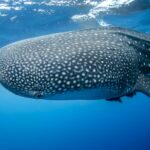Brief Overview of the Galapagos Islands
The Galapagos Islands, a volcanic archipelago in the Pacific Ocean, is renowned for its unique wildlife and its historical significance to Charles Darwin’s theory of evolution. This remote paradise, located about 1,000 kilometers off the coast of Ecuador, is a UNESCO World Heritage site and one of the most sought-after travel destinations in the world.
Importance of Tourism in the Galapagos
Tourism plays a vital role in the Galapagos economy, contributing significantly to local income and employment. However, the islands’ popularity as a tourist destination has raised concerns about overcrowding and its potential impact on the fragile ecosystem. This article delves into the complexities of tourism in the Galapagos, examining the factors influencing crowding, its effects, and how travelers can contribute to sustainable tourism.
Understanding the Tourist Seasons in the Galapagos
Peak Season: Mid-June to Early-September
The Galapagos Islands experience their peak tourist season from mid-June to early September. This period coincides with the Northern Hemisphere’s summer vacation, leading to an influx of tourists from Europe and North America. During this time, the islands are bustling with activity, and tourist facilities are often fully booked.
Off-Peak Season: The Rest of the Year
The off-peak season, covering the rest of the year, sees fewer tourists. However, the Galapagos’ unique climate, influenced by ocean currents, ensures that wildlife viewing is excellent throughout the year. The off-peak season can offer a more relaxed and intimate experience, with fewer crowds and more availability of accommodations and tours.
Factors Influencing Crowding in the Galapagos
Global Tourism Trends
Global tourism trends significantly influence the number of visitors to the Galapagos. For instance, the rise of eco-tourism and adventure travel has increased the islands’ appeal to a broader demographic. Furthermore, the growing middle class in emerging economies like China and India has led to an increase in international travel, contributing to the tourist influx.
Environmental Regulations and Restrictions
The Ecuadorian government and the Galapagos National Park Service have implemented strict regulations to control tourist numbers and minimize environmental impact. These include limiting the number of tourist permits issued each year and restricting access to certain areas to protect wildlife habitats.
Availability of Accommodations and Amenities
The availability of accommodations and amenities also influences crowding in the Galapagos. The islands have a limited number of hotels and guesthouses, and during peak season, these can be fully booked, leading to a sense of overcrowding. Additionally, the limited number of restaurants and other amenities can also contribute to this perception.
Impact of Crowding on the Galapagos Islands
Effects on Local Wildlife and Ecosystem
Overcrowding can have significant effects on the Galapagos’ unique wildlife and ecosystems. Increased human activity can disturb animal behaviors, degrade habitats, and lead to pollution. For instance, boat traffic can disrupt marine life, while littering and improper waste disposal can harm both terrestrial and marine ecosystems.
Impact on Local Communities and Economy
While tourism provides economic benefits, overcrowding can strain local resources and infrastructure. For example, increased water and energy consumption can lead to shortages, while waste generation can overwhelm local waste management systems. Additionally, the influx of tourists can lead to inflation, making goods and services more expensive for local residents.
Implications for Tourist Experience
Overcrowding can also negatively impact the tourist experience. Long queues, crowded attractions, and difficulty finding accommodations can detract from the enjoyment of visiting the islands. Furthermore, the sense of being in a crowded tourist hotspot can diminish the feeling of being in a remote and unique natural environment.
How to Navigate the Crowds in the Galapagos
Planning Your Visit: Timing and Itinerary
Careful planning can help mitigate the effects of crowding. Visiting during the off-peak season can provide a more relaxed experience. Additionally, choosing less popular islands or attractions can help avoid crowds. A well-planned itinerary that includes a mix of popular and lesser-known sites can enhance your experience.
Finding Bargains: Travel Tips and Tricks
Traveling during the off-peak season can also lead to cost savings, as hotels and tour operators often offer discounts during these periods. Booking well in advance can also secure better deals. Additionally, consider using local tour operators and accommodations, as they often provide more personalized service and contribute more directly to the local economy.
Embracing Responsible Tourism
Embracing responsible tourism practices can help mitigate the impact of crowding. This includes respecting local customs and regulations, minimizing waste, and avoiding disturbing wildlife. Travelers can also contribute to local conservation efforts, for instance, by participating in volunteer programs or donating to local conservation organizations.
Case Study: The 2021 Tourist Season
Analysis of Tourist Numbers and Trends
The 2021 tourist season in the Galapagos was significantly affected by the COVID-19 pandemic. Travel restrictions and health concerns led to a sharp decrease in tourist numbers. However, as restrictions eased, there was a gradual increase in visitors, highlighting the resilience of tourism in the Galapagos.
Response from Local Authorities and Businesses
Local authorities and businesses responded to the challenges of the 2021 season by implementing health and safety measures, offering flexible booking policies, and promoting the islands as a safe and sustainable travel destination. These efforts helped mitigate the impact of the pandemic and paved the way for a recovery in tourism.
Lessons Learned and Future Predictions
The 2021 season underscored the importance of sustainable and responsible tourism in the Galapagos. The lessons learned from this challenging period will likely shape future tourism policies, with a greater emphasis on balancing tourist demand with environmental sustainability. The experience also highlighted the potential of digital technologies, such as online booking and virtual tours, in managing tourist numbers and enhancing the visitor experience.
Alternatives to the Crowded Galapagos
Lesser-Known Destinations in Ecuador
For those seeking alternatives to the crowded Galapagos, Ecuador offers a wealth of lesser-known destinations. The Amazon rainforest, the Andean highlands, and the Pacific coast all offer unique wildlife and cultural experiences. These destinations can provide a more off-the-beaten-path experience while still contributing to Ecuador’s tourism economy.
Other Unique Wildlife Destinations Around the World
There are also many other unique wildlife destinations around the world that offer similar experiences to the Galapagos. For instance, the Serengeti in Tanzania, the Great Barrier Reef in Australia, and the Pantanal in Brazil all offer exceptional wildlife viewing opportunities. These destinations can provide a different perspective on the wonders of nature and the importance of conservation.
In Summary: The Future of Tourism in the Galapagos
Balancing Tourism Demand and Environmental Sustainability
The future of tourism in the Galapagos will likely involve a delicate balancing act between meeting tourist demand and ensuring environmental sustainability. This will require ongoing efforts from local authorities, businesses, and tourists themselves. By embracing responsible tourism practices, travelers can contribute to the preservation of this unique destination for future generations.
The Role of Travelers in Protecting the Galapagos
Travelers play a crucial role in protecting the Galapagos. By choosing sustainable travel options, respecting local regulations, and supporting local conservation efforts, they can help ensure the long-term viability of tourism in the Galapagos. As the saying goes, “Take only pictures, leave only footprints.” This ethos is particularly relevant in the Galapagos, where the footprints of tourism can have far-reaching impacts.
Frequently Asked Questions
When is the best time to visit the Galapagos to avoid crowds?
The off-peak season, which covers most of the year except for mid-June to early September, tends to be less crowded. However, wildlife viewing is excellent throughout the year, so there’s no bad time to visit the Galapagos.
How does overcrowding affect the Galapagos’ wildlife and ecosystems?
Overcrowding can disturb animal behaviors, degrade habitats, and lead to pollution. Increased boat traffic can disrupt marine life, while littering and improper waste disposal can harm both terrestrial and marine ecosystems.
What measures are in place to control tourist numbers in the Galapagos?
The Ecuadorian government and the Galapagos National Park Service have implemented strict regulations to control tourist numbers. These include limiting the number of tourist permits issued each year and restricting access to certain areas to protect wildlife habitats.
How can travelers contribute to sustainable tourism in the Galapagos?
Travelers can embrace responsible tourism practices, such as respecting local customs and regulations, minimizing waste, and avoiding disturbing wildlife. They can also contribute to local conservation efforts, for instance, by participating in volunteer programs or donating to local conservation organizations.
What are some alternatives to the crowded Galapagos?
Ecuador offers a wealth of lesser-known destinations, such as the Amazon rainforest, the Andean highlands, and the Pacific coast. There are also many other unique wildlife destinations around the world, such as the Serengeti in Tanzania, the Great Barrier Reef in Australia, and the Pantanal in Brazil.
What is the future of tourism in the Galapagos?
The future of tourism in the Galapagos will likely involve balancing tourist demand with environmental sustainability. This will require ongoing efforts from local authorities, businesses, and tourists themselves. By embracing responsible tourism practices, travelers can contribute to the preservation of this unique destination for future generations.
References
- Ecuador’s Ministry of Tourism. (2021). Tourism Statistics Report.
- Galapagos National Park Service. (2021). Visitor Regulations and Guidelines.
- World Wildlife Fund. (2021). Impact of Tourism on the Galapagos Islands.
- Responsible Travel. (2021). How to Travel Responsibly in the Galapagos.








